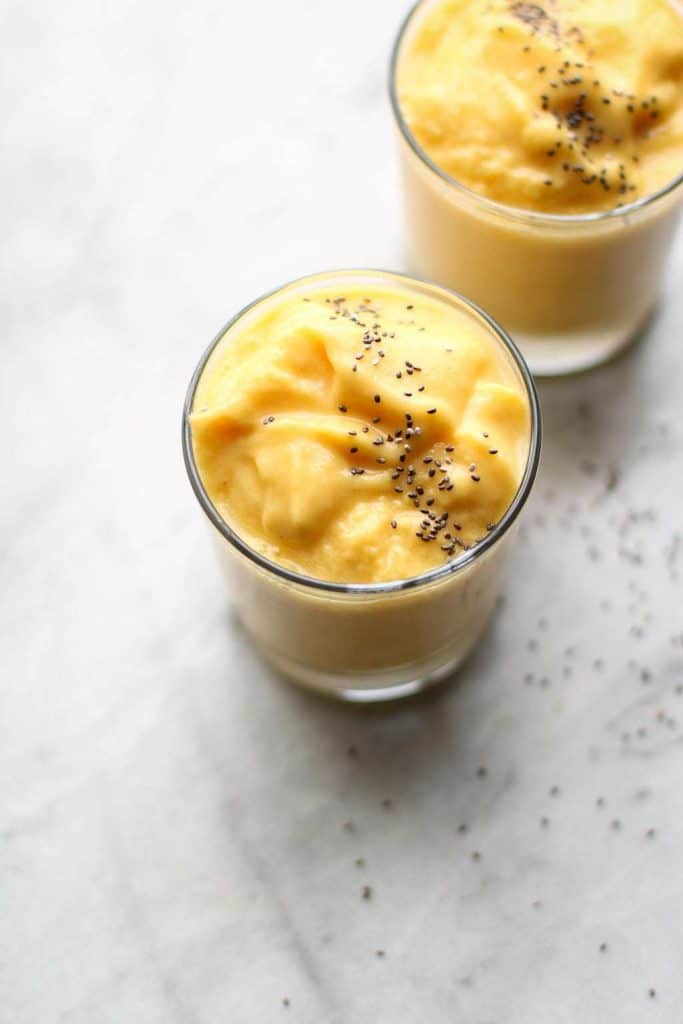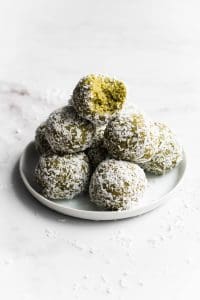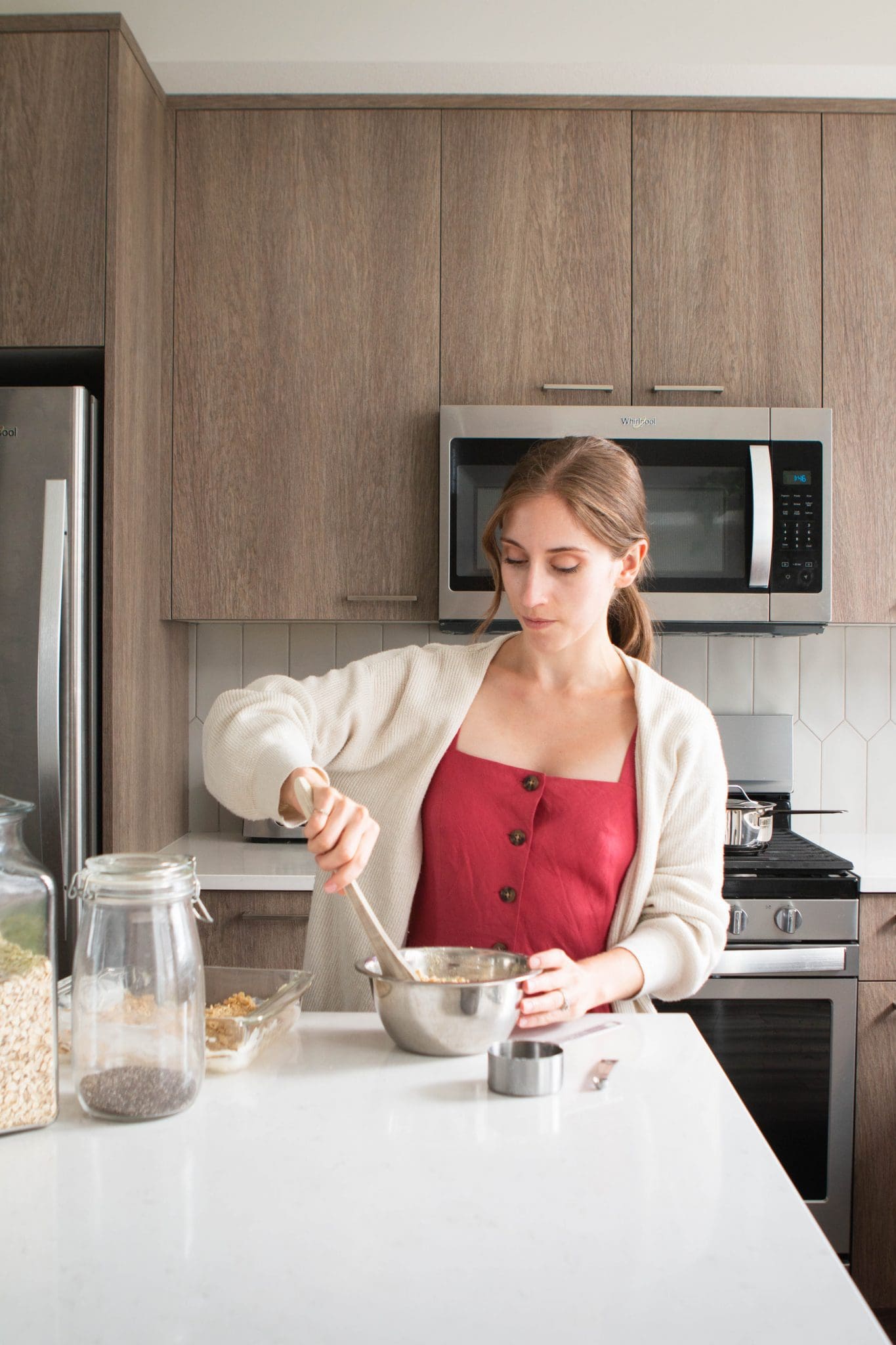Learn how to add protein to your smoothies without protein powder. If you’re looking for a protein powder alternative, try using these basic (mostly) plant-based ingredients you might already have at home.
First, I want to be clear that there’s nothing wrong with protein powder. It’s a quick and convenient option for adding protein to smoothies and other recipes. However, for many of us, protein powder is not necessary. Depending on the brand, it can also be very expensive and can add an unpleasant flavor that not everyone appreciates. Those with sensitive guts may also find that protein powder triggers unwanted digestive symptoms. If protein powder is not for you, it’s possible to add protein to your smoothies by using ingredients you might already have on hand. This post will guide you through a variety of options. But first…
High-protein diets have been very trendy for some time now and while many of us don’t need as much protein as social media makes it seem, this nutrient is still important. Protein can help with satiety, blood sugar management, muscle building, and more. By adding protein (and fiber!) to a smoothie, you’ll avoid getting hungry an hour after. Just remember that eating enough will also be important, so make sure to bulk up your smoothie with nutrient-dense and calorie-dense ingredients as needed.
This will vary from person to person, based on your activity levels, goals, and size. The minimum recommendation for health is generally 0.8g of protein per kg of body weight per day. However, most people will benefit from aiming for 1.2g per kg instead. This will offer more benefits in muscle building, satiety and more. Some may also benefit from more! To learn more about your own protein needs, I recommend talking to a dietitian for a one-on-one assessment. If you’re located in British Columbia, New Brunswick or Nova Scotia, I would be happy to help!
Not everyone needs protein powder to meet their protein needs. However, it can be helpful for some. If you’re an athlete or if you’re healing after surgery for example, your protein needs may be higher. In these cases, protein powder can make it much easier to meet your needs. They can also be helpful for those with lower appetites or who struggle to get enough protein due to dietary restrictions or preferences. If you tolerate protein powder well and if you can benefit from their convenience, then they could be a great option for you.
Now, if you’re looking for protein powder alternatives, here are some high-protein ingredients you can consider.
How to Add Protein to Your Smoothies Without Using Protein Powder:
Soy Milk or Other High-Protein Milk
Soy milk has more protein than other plant-based milks. It actually has the same amount of protein as cow’s milk per cup. 8g to be exact. For that reason, it’s a great option for adding plant-based protein to a smoothie! Pea milk is another less popular option that’s comparable to soy milk in terms of protein. Here in Canada, we also have a cashew and almond milk with added protein. Note that regular nut milks are not a significant source of protein.
Plant-Based Yogurt
Not all plant-based yogurts will contain protein, but there are more and more Greek-style plant yogurts available. For example, here in Canada, Maison Riviera has a Greek-style yogurt with 12g of protein per 3/4 cup.
Hemp Hearts
Hemp hearts have more protein than most seeds and a little goes a long way. Try adding 3 tablespoons to your smoothies for an additional 10g of protein. It also offers a good dose of omega-3’s and fiber.
Chia Seeds and Flaxseeds
Chia seeds and flaxseeds have a little less protein than hemp hearts at 6g per 3 tablespoons. However, they do add a significant amount of fiber and omega-3’s.
Nuts
If you have a strong blender, try adding some whole nuts (unsalted) to your smoothies. For example, 1/4 cup of walnuts will add almost 5g of protein. This may not seem like much, but when added with other protein sources, it adds up!
Nut or Seed Butter
Peanut butter, almond butter and other nut or seed butters can add some creaminess and nutrition to your smoothies. 2 tablespoons of peanut butter will add 8g of protein while almond butter will add about 7g. They also add a delicious nutty flavor to smoothies. However, be careful with the peanut butter as its strong flavor may not go well with every smoothie. If you want a nut-free option, you can try SunButter, which adds 7g of protein per 2 tablespoons.
Tofu
Don’t give up on tofu too quickly. When added to smoothies, the light flavor is undetectable! That being said, start with a small portion and adjust it to your liking. I would recommend starting with a 1/3 cup, which will add almost 7g of protein. You can find two delicious tofu smoothies in my Cooking with Legumes eBook.
Lentils
Cooked lentils can be added to smoothies too! However, they can add a strong flavor to your smoothies if not done right. Try adding 1/4-1/2 cup of lentils to your smoothie for an additional 4.5-9g respectively. Red lentils would be best and they work well in sweeter smoothies with lots of flavor.
Beans
Just like lentils, cooked beans can be added to smoothies for extra protein and fiber. Again, they will do best in sweet smoothies packed with flavor to mask the light bean taste. When done right, you won’t taste the beans at all! 1/2 cup of most beans will add almost 8g of protein.
Oats
Grains contain protein too! While they might not contain as much protein as other ingredients in this list, everything adds up. 1/4 cup of rolled oats will add 2.5g of protein to your smoothie.
Dairy
If you eat dairy, you can try plain Greek yogurt, cow’s milk or cottage cheese. Greek yogurt is a great option that adds 18g per 3/4 cup serving, while cottage cheese will have 17g per 1/2 cup! Regular cow’s milk has 8g per cup and there are also ultra-filtered milks on the market, that have 13g of protein per cup. There are many lactose-free dairy options if you’re lactose intolerant.
Know that individually, not all of these options will add a substantial amount of protein. However, combine 2 or more options and you’ll have a filling and nutritious smoothie. You can stick to the basic seeds and milk, or try something different like tofu or beans!

Other Tips for Adding Nutrition to Your Smoothies
Instead of adding juice, try adding plant-based milk, water or coconut water to your smoothies. This will limit the amount of sugar added. While there’s absolutely nothing wrong with adding fruit (that’s the point of smoothies!), using juice without adding more protein or fiber means you’ll likely be hungry soon after.
Add fiber by throwing some oats, ground flax seeds, spinach, kale, frozen cauliflower, nuts or other seeds in your smoothie. Of course whole fruits have fiber too!
Add some fats for satiety by adding some avocado (fresh or frozen) and/or nuts and seeds. Flax oil is also a great option that will add some omega-3’s.
For more tips, check out these posts:
Protein Powder-Free Smoothie Recipes to Try:
- Nourishing Banana Oat Smoothie
- Refreshing Green Mango Smoothie
- Pink Berry Lime Smoothie
- Hydrating Super Green Smoothie
- Golden Mango Citrus Smoothie
- Nourishing Strawberry Banana Oat Smoothie
This information is intended for educational purposes only and is not meant to replace individualized nutrition or medical advice.
Protein amounts source: USDA food composition database.
This post was originally posted in 2020 and has been updated with more details and helpful tips.














Leave a Reply